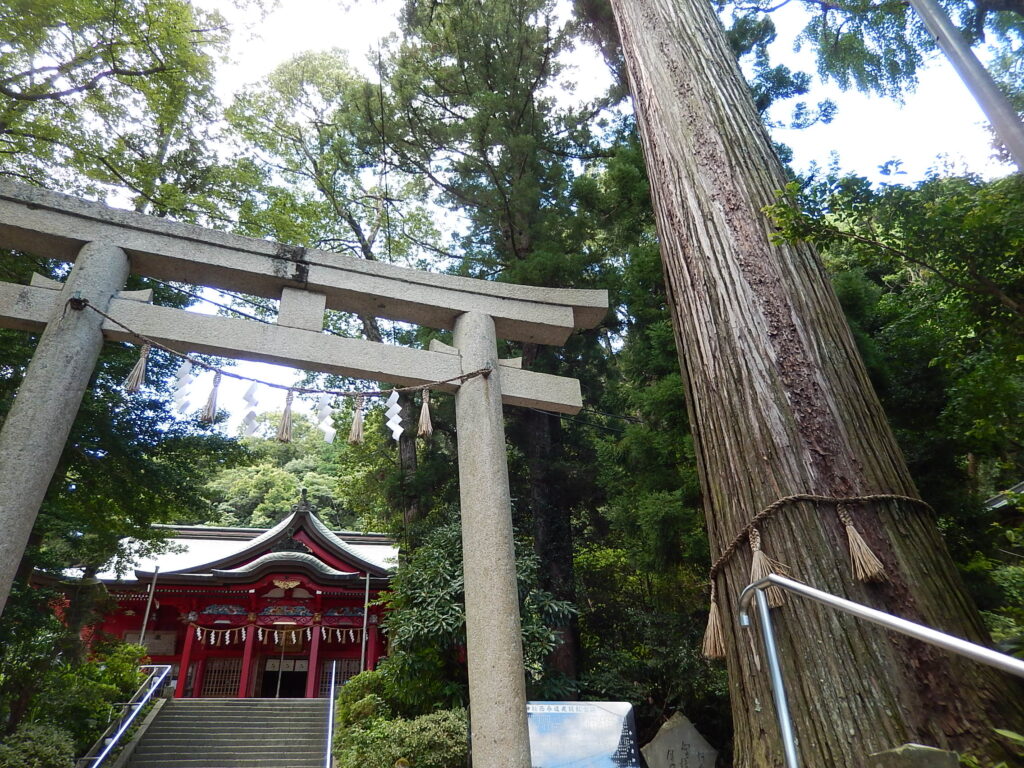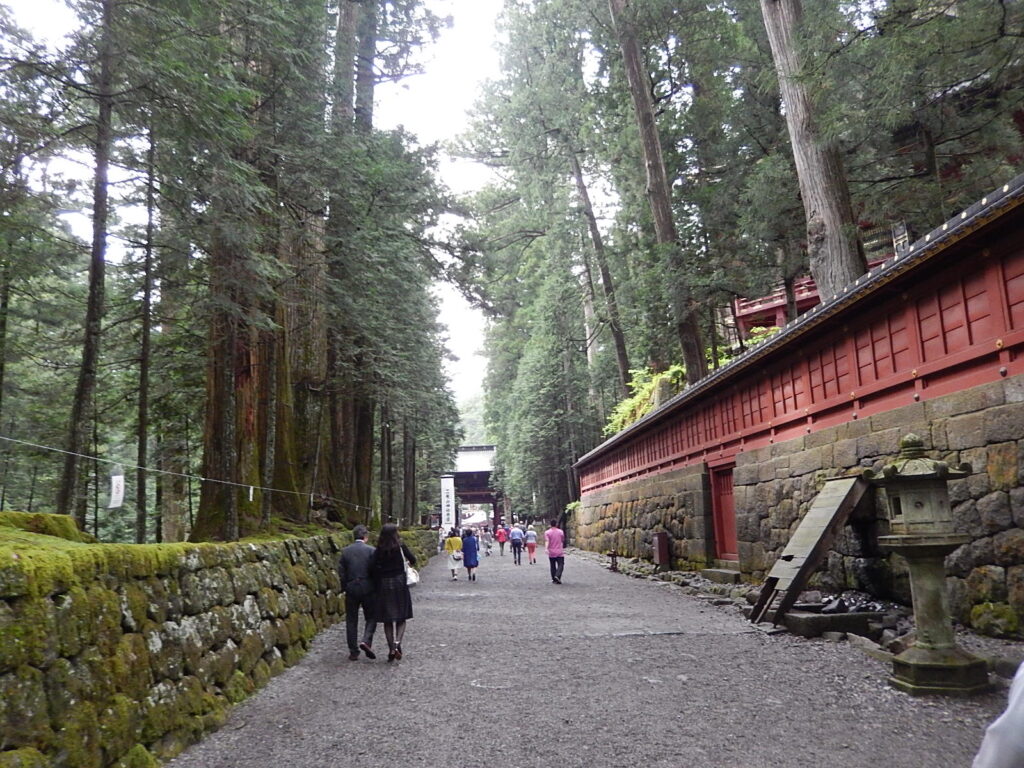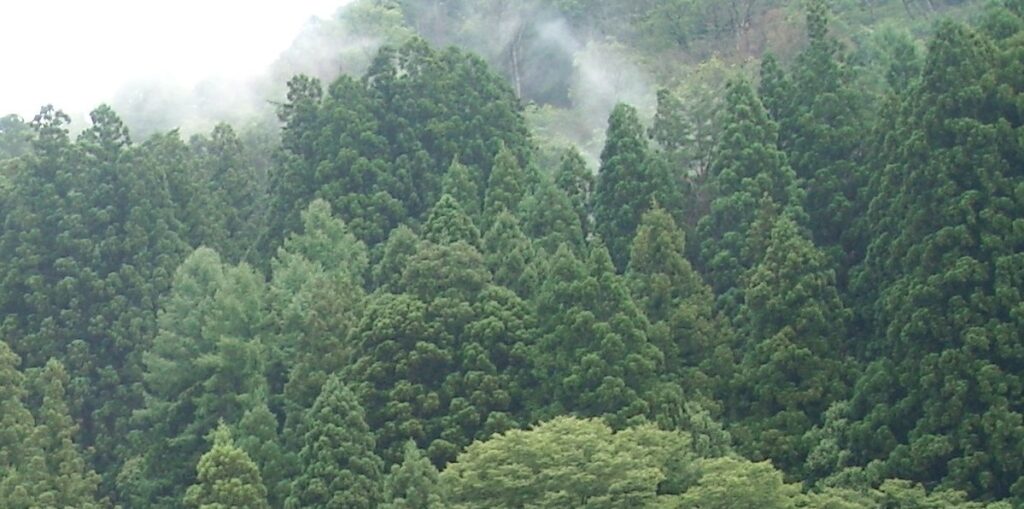When I guided my guests to a Shinto shrine or a Buddhist temple, they often asked me about a cedar tree, because there are usually tall cedar trees in the precinct of a shrine and a temple, and they looked special. I would like to introduce interesting stories about cedar trees.
1. Native tree
Cedar tree is the native tree of Japan, commonly seen in mountains and planted in temples and shrines, with many hugely impressive trees planted centuries ago. It is a very large evergreen tree, reaching up to 70 m tall and 4 m trunk diameter, with red-brown bark which peels in vertical strips.
Cedar timber is extremely fragrant, weather and insect resistant, soft, and with a low density.
The timber is used to make houses, tubs, casks, furniture and chopsticks. The bark is used to make incense for religious things.
2. Shinto shrine and cedar
Shinto is the indigenous religion of Japan. Shinto is based on the worship of nature and ancestors. It is polytheism and is believed to have 8 million gods of nature. A Shinto shrine is a place of worship. There are more than 85,000 Shinto shrines all over Japan.

It was thought that a God descended along a cedar tree from heaven to the ground world in ancient times. The cedar grows straight up in trees highly and thickly. The figure looks like a holy thing. That is a reason why there are tall cedar trees in a Shinto shrine.
Takachiho is a district of Kyushu where it has been believed that the Sun Goddess Amaterasu had descended in ancient times. Until now the traditional dance called Yakagura has been inherited to be performed in Takachiho. The dance represents that the God descended through a big cedar tree.
3. Buddhist temple and cedar
Buddhism was introduced to Japan in the mid-6th century from China through Korea. Buddhism is based on teachings of Buddha. It is a world religion and idolatry. A Buddhist temple is a place of worship. There are about 75,000 Buddhist temples in Japan.

In the precinct and the approach of a Buddhist temple there are often large cedar trees. The followings are said to be reasons:
The cedar leaves smell so good that it has been used to make incense.
As the cedar leaves burnt well, it was convenient for fire ceremony of Buddhism and torch firing.
The bark of the cedar has been used for restoration of roofs of shrines and temples.
As weeds were hard to grow thick to the tree bases of the cedar, it was planted in the shrines and temples.
4. Cedars in mountains
About 70 percent of the Japanese land mass is mountains. During and after the World War II, the mountains have been stripped bare by excessive logging for use as fuel and lumber. Those treeless mountainsides had led to disasters, particularly landsides. The government promoted to plant the fast-growing cedars to prevent any disasters.

Cedar was also seen as the best choice for use as timber when demand for housing materials skyrocketed. In line with rapid growth in the Japanese economy some natural diversified forest areas were also replanted with cedar.
As a result, roughly 70 percent of the Japanese land mass that is covered in forest, around 40 percent is manmade according to the Japanese Forestry Agency. Artificially planted cedar forests make up 18 percent of the nation’s forests, while artificial native cypress trees, or hinoki, make up around 10 percent.
5. Hay fever
From February to April, many Japanese wear masks to prevent from or to ease symptom of hay fever which is commonly caused by pollen from cedar and Japanese cypress.
Hay fever was relatively uncommon in Japan until the early 1960s. In 1964, Japan’s lumber market was opened to cheaper, foreign imports and consumption of domestic timber dropped. Cutting of the trees slowed and vast areas of cedar were left to mature to around 30 years of age when they began to produce a large quantity of pollen.
I think that the government should take measures to solve the hay fever problem by cutting many cedar trees in the mountains or developing good medicines.
Anyway, cedar trees have been important for Japanese life and culture.
6. Reference
(1) “A Complete Guide to Japanese Culture and Scenic Spots in English” by Ueda
Goken
(2) “The Strange Story of Hay Fever in Japan” by Kirsty Kawano
(https://blog.gaijinpot.com/strange-story-hay-fever-japan/)
Written by Eddy Murayama

Comment